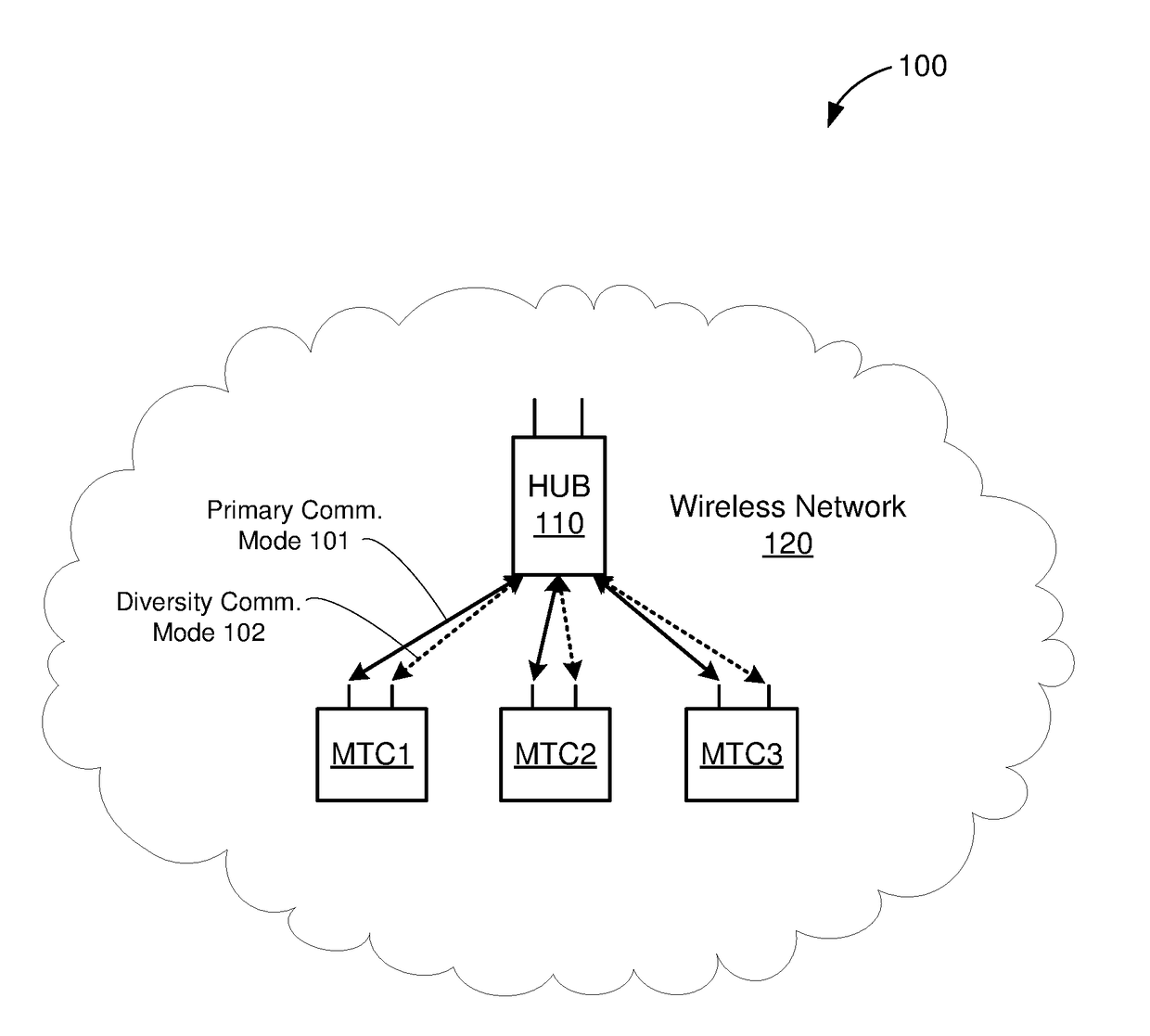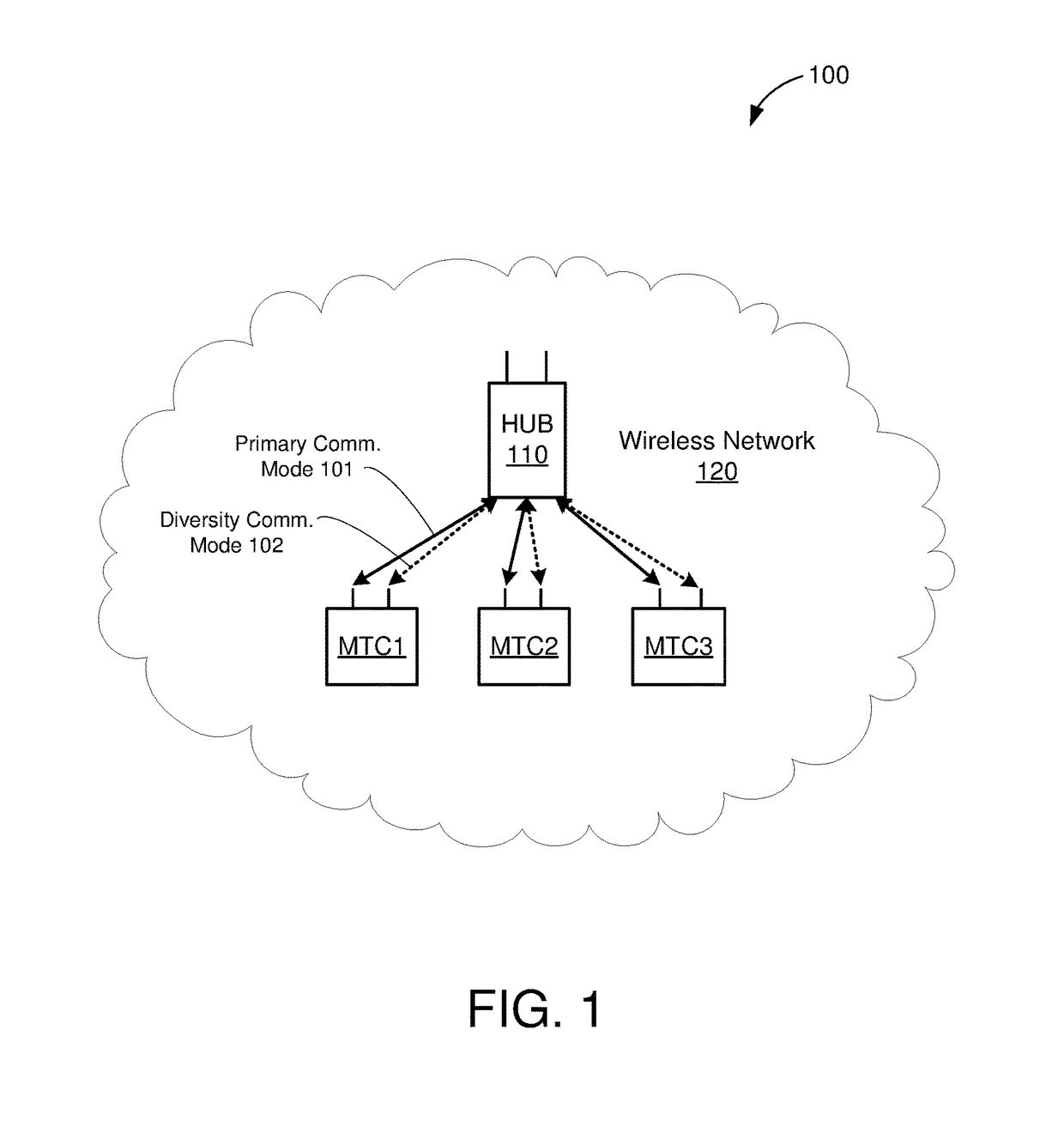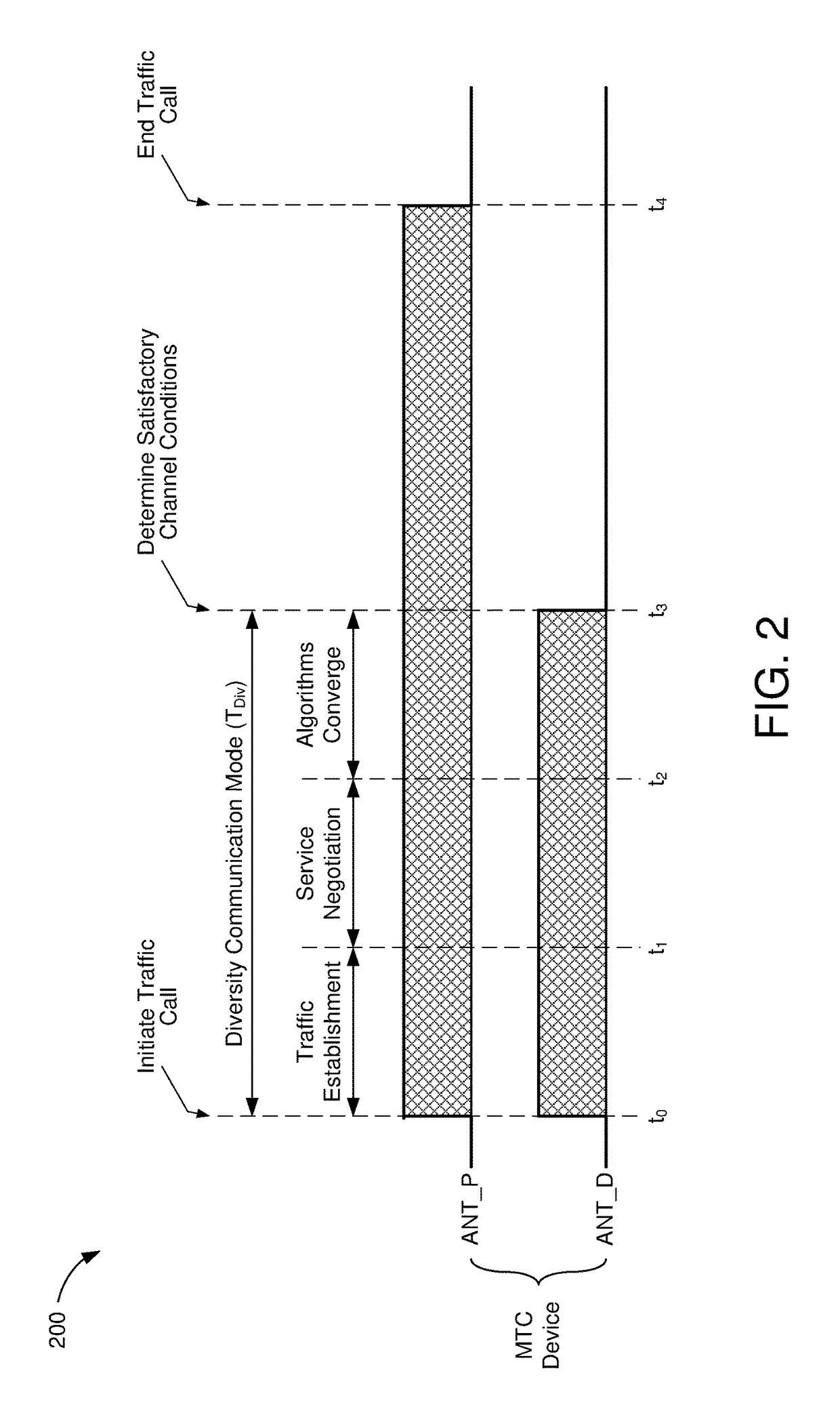Selective use of antenna diversity in mtc devices
a technology of mtc devices and antenna diversity, applied in the field of mtc devices, can solve the problems of high power sensitiveness and increase power consumption of diversity antennas, and achieve the effect of reducing power consumption of wireless devices
- Summary
- Abstract
- Description
- Claims
- Application Information
AI Technical Summary
Benefits of technology
Problems solved by technology
Method used
Image
Examples
Embodiment Construction
[0020]The example embodiments are described below in the context of machine-type communication (MTC) devices for simplicity only. It is to be understood that the example embodiments are equally applicable to other wireless devices (e.g., mobile phones, tablets, computers, etc.), as well as for devices using signals of one or more wired standards or protocols (e.g., Ethernet and / or HomePlug / PLC standards). As used herein, the term “wireless network” may include communications governed by the IEEE 802.11 family of standards, BLUETOOTH® (Bluetooth), HiperLAN (a set of wireless standards, comparable to the IEEE 802.11 standards, used primarily in Europe), and various cellular communication standards (e.g., 4G Long Term Evolution (LTE), third generation of mobile communications technology (3G), Global System for Mobile Communications (GSM), etc.). In some implementations, a wireless network may include communications governed by two or more wireless communication standards.
[0021]In the f...
PUM
 Login to View More
Login to View More Abstract
Description
Claims
Application Information
 Login to View More
Login to View More - R&D
- Intellectual Property
- Life Sciences
- Materials
- Tech Scout
- Unparalleled Data Quality
- Higher Quality Content
- 60% Fewer Hallucinations
Browse by: Latest US Patents, China's latest patents, Technical Efficacy Thesaurus, Application Domain, Technology Topic, Popular Technical Reports.
© 2025 PatSnap. All rights reserved.Legal|Privacy policy|Modern Slavery Act Transparency Statement|Sitemap|About US| Contact US: help@patsnap.com



